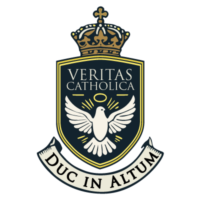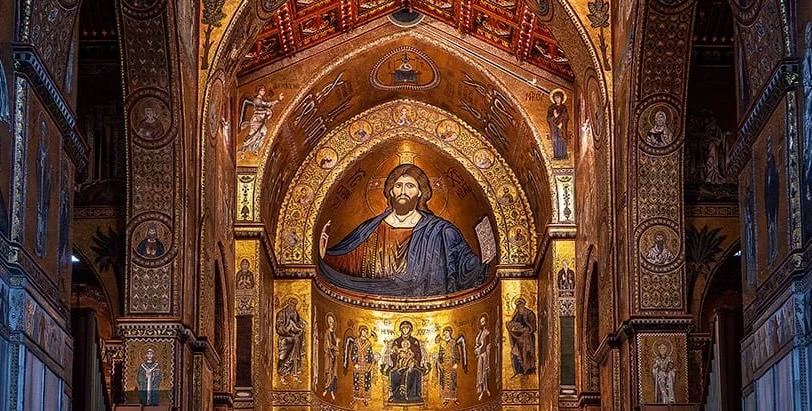Introduction
Monophysitism—from the Greek monos (single) and physis (nature)—represents a significant theological controversy in early Christian history. This Christological doctrine asserts that Jesus Christ possessed only a divine nature, rather than the two natures—divine and human—taught by Catholic doctrine. The Catholic position, known as the hypostatic union, maintains that in the single person of Jesus Christ, two complete natures exist simultaneously without mixture, confusion, or separation. The Monophysite controversy sparked intense theological debates that ultimately led to enduring divisions within Christianity. This article examines Monophysitism from a Catholic theological perspective, tracing its historical development, analysing arguments against it, and discussing its continuing relevance in contemporary theological discourse, particularly in relation to Oriental Orthodox Churches.
Historical Origins and Development of Monophysitism
Monophysitism emerged within a larger context of Christological debates in the early Church. Previous controversies, including Arianism (which questioned Christ’s full divinity) and Nestorianism (which overemphasised the distinction between Christ’s natures), had already polarised Christian theological thought. These debates reflected fundamental differences between the Antiochene school, which emphasised Christ’s humanity, and the Alexandrian school, which stressed His divinity.
The Council of Ephesus (431) proved decisive in this evolution. Under the leadership of St. Cyril of Alexandria, this council condemned Nestorius for apparently teaching that Christ consisted of two separate persons. The council also affirmed Mary’s title as Theotokos (God-bearer). Crucially, Cyril employed the phrase mia physis tou Theou Logou sesarkōmenē (“one nature of the Word of God incarnate”)—a formulation later misappropriated by Monophysite theologians.
Eutyches, an archimandrite from Constantinople, became Monophysitism’s primary advocate. Reacting against Nestorianism, he taught that Christ existed “of two natures before the union, but after the union, one nature.” This position effectively suggested that Christ’s human nature was absorbed into the divine. Dioscorus of Alexandria supported Eutyches and presided over the Second Council of Ephesus in 449—later derided as the “Robber Council” by Pope Leo I. At this controversial assembly, Eutyches was vindicated while his opponents, including Flavian of Constantinople, faced deposition. Pope Leo’s theological letter (the “Tome”) was summarily ignored.
Official Catholic Church Doctrine on the Nature of Christ
In response to this theological crisis, the Council of Chalcedon was convened in 451. This council definitively proclaimed that Jesus Christ is “perfect in Godhead and also perfect in manhood; truly God and truly man,” possessing “two natures without confusion, without change, without division, without separation.” This formulation affirmed the hypostatic union, preserving both Christ’s complete divinity and full humanity.
Pope Leo’s Tome proved instrumental in shaping this definition. He famously declared: “Each nature performs what is proper to it in communion with the other: the Word performs what pertains to the Word, and the flesh carries out what pertains to flesh.” This precise articulation became foundational for Catholic Christology.
The contemporary Catechism of the Catholic Church maintains this understanding: “Jesus Christ is true God and true man, in the unity of his divine person; for this reason he is the one and only mediator between God and men” (CCC 480).
The Catholic Church’s Refutation of Monophysitism
The Catholic Church rejects Monophysitism as a heresy that fundamentally undermines Christ’s salvific mission. St. Gregory of Nazianzus articulated this critique succinctly: “What is not assumed is not healed.” This principle suggests that if Christ did not take on complete human nature, then humanity could not be fully redeemed. Without authentic humanity, Christ’s suffering, death, and resurrection would lack redemptive efficacy.
The Council of Chalcedon emphasised that Christ’s role as mediator between God and humanity depended on his possession of both natures. Any denial of either nature distorts the Incarnation’s mystery and compromises the Atonement’s effectiveness.
Theological Arguments Against Monophysitism by Catholic Thinkers
Pope Leo’s Tome represented not merely a political document but a profound theological synthesis. He emphasised the distinct operations of each nature functioning fully within the one person of Christ. Leo’s argumentation maintained the unity of person while preserving the integrity of both natures.
Catholic theology developed the concept of communicatio idiomatum—the communication of properties—to demonstrate how divine and human attributes can be attributed to the single person of Christ without confusion. For instance, the statement “God suffered” is theologically valid not because divinity itself can suffer, but because the one divine person also experienced suffering in His human nature.
This theological precision avoids the Monophysite error of conflating personhood with a single nature. Chalcedonian Christology carefully distinguishes between hypostasis (person) and physis (nature).
Contrasting Monophysitism with the Catholic Understanding of the Incarnation
The following chart summarises key differences:
| Feature | Monophysitism | Catholic Understanding (Hypostatic Union) |
| Nature(s) of Christ | One, primarily divine | Two: divine and human |
| Person of Christ | One divine person | One divine person |
| Union of Natures | Fusion/absorption | Without confusion, change, division, separation |
| Humanity of Christ | Diminished or absorbed | Full and complete, like ours in all but sin |
| Divinity of Christ | Emphasized | Fully affirmed |
| Impact on Atonement | Undermines real human suffering | Necessary for mediation and redemption |
The Significance of Monophysitism in the Development of Catholic Christology
Though condemned as heretical, Monophysitism catalysed crucial doctrinal clarification. The Church’s response led to more precise articulation of Christ’s dual nature and refined Christological terminology. The Council of Chalcedon established a cornerstone of Catholic theology upon which subsequent ecumenical councils built.
This controversy also highlighted papal authority’s importance in resolving theological disputes. The council fathers’ declaration that “Peter has spoken through Leo” underscored the Tome’s doctrinal authority.
Scriptural Interpretation: Catholic vs. Monophysite Readings
The Monophysite controversy involved competing interpretations of key biblical texts:
John 1:14 – “The Word became flesh and made his dwelling among us.”
- Catholic Interpretation: This passage affirms Christ’s full humanity, emphasising that the divine Word assumed human nature without alteration.
- Monophysite Response: Some Monophysites accepted this verse but interpreted “flesh” as being absorbed into the divine nature, resulting in a single, unified nature.
Philippians 2:6–8 – “Who, being in very nature God… made himself nothing by taking the very nature of a servant, being made in human likeness.”
- Catholic Interpretation: This passage underscores Christ’s voluntary humility, maintaining his divine nature while assuming human nature.
- Monophysite Response: Monophysites acknowledged this verse but often emphasised the “emptying” (kenosis) as subsuming human nature into the divine.
Hebrews 2:17 – “For this reason he had to be made like them, fully human in every way.”
- Catholic Interpretation: This verse supports the belief that Christ was fully human, affirming his human nature’s integrity.
- Monophysite Response: Some Monophysites accepted this verse but interpreted “fully human” as referring to humanity’s appearance, not its complete reality.
Luke 24:39 – “Look at my hands and my feet. It is I myself! Touch me and see; a ghost does not have flesh and bones, as you see I have.”
- Catholic Interpretation: This post-resurrection appearance affirms Christ’s bodily resurrection, highlighting his human nature’s reality.
- Monophysite Response: Monophysites acknowledged this passage but often interpreted the post-resurrection body as glorified rather than fully human.
Isaiah 9:6 – “For to us a child is born… and he will be called… Mighty God.”
- Monophysite Interpretation: This prophecy indicated that Christ’s divine nature absorbed his human nature.
- Catholic Response: Catholics interpreted this as a prophecy of the Messiah’s divine titles, affirming both his divinity and humanity without conflation.
John 10:30 – “I and the Father are one.”
- Monophysite Interpretation: This statement supported the unity of Christ’s nature, suggesting human nature’s absorption into the divine.
- Catholic Response: Catholics emphasised that this verse addresses the unity of divine will and essence between Father and Son, without implying loss of Christ’s human nature.
Colossians 2:9 – “For in Christ all the fullness of the Deity lives in bodily form.”
- Monophysite Interpretation: This verse suggested Christ’s divine nature entirely encompassed his human nature.
- Catholic Response: Catholics interpreted this as affirming divine nature’s fullness dwelling in Christ’s person, who remained both fully divine and fully human, with each nature retaining its distinct properties.
These divergent interpretations stem from fundamentally different Christological presuppositions, with Catholic theology maintaining that Scripture must be read within the Church’s living tradition.
Contemporary Relevance and Legacy of Monophysitism in Catholic Theology
Monophysitism’s legacy persists particularly in ecumenical dialogues with Oriental Orthodox Churches. These churches adhere to Miaphysitism—a view distinct from Eutychian Monophysitism. Miaphysitism teaches that Christ has one united nature that is simultaneously fully divine and fully human.
Contemporary Catholic theology recognises that many historical disagreements involved terminology rather than substance. Joint declarations—such as the 1994 agreement between the Catholic and Coptic Orthodox Churches—affirm shared beliefs about Christ’s mystery.
While the Catholic Church maintains that Chalcedonian Christology best expresses biblical and apostolic faith, it acknowledges the sincerity and orthodoxy present in many non-Chalcedonian traditions in the spirit of ecumenical dialogue.
Conclusion
Monophysitism, with its assertion of Christ’s single nature, fundamentally diverges from the Catholic doctrine of the hypostatic union. It compromises both Christ’s humanity and the Atonement’s efficacy. The Church’s response, culminating in the Council of Chalcedon and Pope Leo’s Tome, affirms Christ’s true divinity and humanity united in one divine person.
This theological controversy not only clarified Catholic Christology but deepened the Church’s theological language and ecclesial authority. Today, while Monophysitism remains officially rejected as heretical, its legacy continues through constructive ecumenical dialogue with Oriental Orthodox Churches. These ongoing conversations reflect a shared commitment to proclaiming the Incarnation’s full mystery: that the Word truly became flesh and dwelt among us—not as illusion, but in the complete fullness of truth and love.



